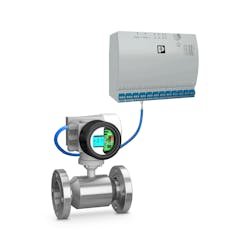Can Your Industrial Automation Network Handle the Future?
July 9, 2024
4 min read
Process engineering teams are currently facing a difficult decision, both in brownfield and greenfield projects. For more than two decades now, process automation plants have been able to choose from many new manufacturer solutions like smart field devices, flexible I/O systems and proprietary Ethernet-based systems.
Unlike office IT systems, which are both open and easy to upgrade, the industrial OT (operations technology) space cannot offer the same longevity. Additional hurdles to industrial electronics products for hazardous industrial environments include ongoing testing and evaluation according to the latest published revisions of the IECEx standards, as well as increased regulatory burden related to cyber security and enhanced safety requirements.
So what choices do process automation engineers currently have? Simply put, conventional I/O, fieldbus, and soon, Ethernet-based I/O. Communication methods have evolved from mechanical (pneumatic) to electronics with the 4-20 mA current loop, to a wider serial (RS-485) and fieldbus technique. The 4-20 mA option remains the most used method, with more than 50 years of deployment proving it to be the convention for varying signals.
Conventional I/O is a combination of discrete on/off signals (known in the industry as digital I/O) and 4-20 mA analog I/O signals. And in process automation, the flow, pressure, level and temperature measurements are important variables in any application. The HART communication protocol has been part of a small renaissance over the past few years, as it provides many valuable device details to users who can extract additional data without compromising the working process. Plus, HART has been available built-in (at no additional cost) in many field devices over the years.
Process fieldbus systems based on IEC 61158-2, such as Foundation Fieldbus and Profibus-PA, could have been deployed in the past 25+ years, but they never completely replaced the prior I/O technologies.
Now, as fieldbus faces declining market acceptance and product availability, it is being phased out. This has created great concern for end users who may have recently signed up for a technology that might not be available much longer.
New options with Ethernet-APL
Over the past few years, four industry-leading standards development organizations (SDOs) have collaborated with 12 leading manufacturers of process automation technology, leading to the creation of the Advanced Physical Layer, known as APL. Based on the IEEE 802.3 cg specification for a two-wire, Ethernet-based technology with distances far beyond regular office Ethernet and fulfilling the need to go 1,000 meters (3,280 feet) with 10 Mbit/s data speeds, Ethernet-APL is a modification of the Single Pair Ethernet standard. Because it is just a physical layer, it supports any industrial Ethernet protocol.
To support the most hazardous of process automation environments, APL includes the 2-WISE or 2-Wire Intrinsically Safe IEC TS 600097-47 technical specification, allowing for field device installations in Zone 1/0.
The Ethernet-APL switch (shown at top of this article) can be designed for safe Zone 2 or Zone 1 installation. Two topologies are possible with this switch: the classic Ethernet star or the fieldbus trunk/spur technique (now known as trunk/cascade and with higher performance and further reach than the fieldbus that it replaces).
Some prior process engineering installations may include the correct IEC 61158 type A fieldbus two-wire, shielded cables and still function after many years of operation according to standard. In this case, the cabling can continue to be used for Ethernet-APL.
Designing for the future
The four SDOs represent the EtherNet/IP and Profinet Ethernet-based protocols of the future, as well as the Foundation Fieldbus, HART and Profibus-PA technologies of the past. In addition, the use of OPC-UA based profiles in both FDI and PA-DIM, in addition to many other information models, means a new data-driven, Ethernet-based technology is here.
These newly designed plants will include concepts like NAMUR Open Architecture (NOA) and the Open Process Automation Standard (O-PAS). Clearly, a project upgrade in the 2020s will need manufacturer support to be available into the 2040s.
So, what guarantees will end-users have that HART, Profibus-PA, Foundation Fieldbus and all the infrastructure products will still be supported? To be certain, they need to discuss this with all their suppliers.
To be safe, engineers working on both new and existing projects in process automation need to make the leap into the future with Ethernet-APL or risk their plant’s future by not moving forward far enough to still be operating effectively in 2050.
Learn more at www.PhoenixContact.com/Ethernet-APL.
Arnold Offner is strategic marketing manager of automation infrastructure at Phoenix Contact Development and Manufacturing Inc.
Ethernet-APL Comes from Industry Cooperation and Collaboration
The Ethernet-APL effort is led by a collaboration of standards organizations and industry partners. Participating organizations are FieldComm Group, ODVA, OPC Foundation, and Profibus and Profinet International. Industry partners are ABB, Emerson, Endress+Hauser, Krohne, Pepperl+Fuchs, Phoenix Contact, Rockwell Automation, Samson, Siemens, Stahl, Vega and Yokogawa.
About the Author
Sign up for our eNewsletters
Get the latest news and updates


